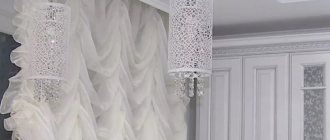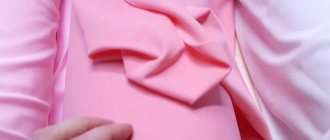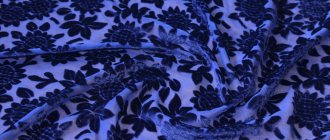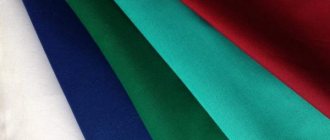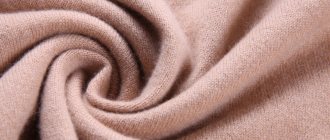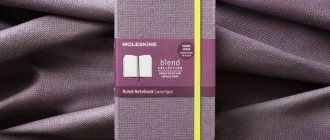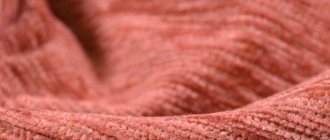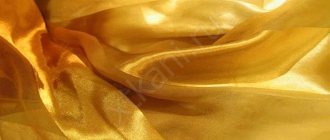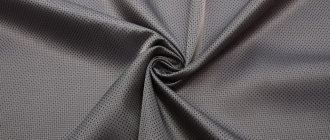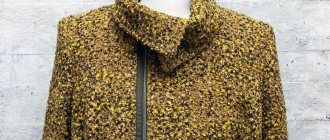Velor fabric is a broad definition that includes not only types of material with a pile surface on the front side. Translated from French, the name means “shaggy”, so the term is used to designate different types - split and looped, differentiated by the method of design. This is the name of some varieties of plush and velvet. The popularity of the velor material is easily explained if we recall its luxurious visualization, its inherent decorativeness and pleasant tactile sensations.
Story
Only the origin of the fabric is known for certain - it came to Europe from the East, but the specific place of manufacture is called differently - the geographical coordinates vary - from China to Iran. The first seems more likely, since velvet (the prototype of velor) was originally made from natural silk. To obtain the pile, silk threads were cut, the material was created using complex and expensive weaving technology. It was very expensive to make such clothes, due to the cost of production and transportation costs.
Those who could afford it appreciated both the ability of silk to protect against flea bites, and additional decorative possibilities - threads of silver and gold, braid with precious stones, hand embroidery. Europe owes the birth of velor to the then developing weaving industry and the simplification of expensive technologies:
Natural silk (of immeasurable cost) was replaced by more affordable wool and cotton;
Pile was no longer made by cutting natural threads (thanks to the different texture, they began to simply be combed);
The density of the weave of the threads was reduced (they, unlike thin silk, were dense and easily amenable to the process).
The reduction in price of velor, the composition of which has undergone changes, has made it possible to launch its mass production and make it available not only to the rich segments of the population. Velor has become a favorite material for elegant clothing among people with average incomes.
Origin
Velor - what kind of material is it? This is a fabric that has a pile front surface; it can contain wool, cotton and synthetic threads. The pile of velor fabric is longer than that of velvet and it is a better alternative to expensive velvet.
The sound of the word is reminiscent of French, but its origin is Eastern. The fabric was made exclusively from silk threads and was considered an integral part of luxury and high cost. But, after a large number of years, it entered the mass market and lost its greatness.
This fabric is similar to velvet, but read about its composition and features in another article.
Description
Velor is a fabric with variable properties, which is now differentiated according to several important characteristics. The breadth of the range produced by the modern weaving industry and the variety of threads provided by farmers and polymer chemistry make it impossible to create a unified classification of all types according to their inherent characteristics:
Velor fabric is different:
According to the origin of the threads - natural velor is made from wool and cotton, synthetic - from polymer mixtures. However, combinations of wool and synthetics (mixed threads that improve performance properties) can be used for clothing and accessories. Natural velor is more expensive, but has less wear resistance. Synthetic and blended have more advantages and a wider scope of application
According to the method of weaving threads (manufacturing technology) - on a knitted and linen base, jacquard, moire.
What velor looks like depends not only on technology, but also on the method of dyeing smooth, printed material. The color can be set in advance, using an already dyed thread, or added after the fabric is formed, varied by weaving in shiny fibers (polymer, lurex or silk).
Types of velor are determined by industrial purpose - wool and cotton velor, mixed velor is used as a material for shoes and clothing, hats and bags. Artificial velor, with its spectacular visualization and durability - for curtains, furniture upholstery and car interiors (these varieties may differ in the strength of the threads, the type of weaving or special impregnations that are dirt- and water-repellent)
Functional characteristics determine the appearance and scope of application: what it is is a simple answer. This is a fabric that has a pile on the surface, but at the same time it is different from plush and velvet. The pile, looped or cut, has a certain pattern, length and density. They determine what to sew from velor - intended for the consumer and used in industry. Use in various fields is due to the presence of many types of fabric with useful or decorative properties, which are combined under one commonly used term.
Reviews
Marina: I want to tell you my opinion about the velor material. Overall I just love it! When I bought furniture for my apartment, I specifically chose upholstery made from, so to speak, “velvet.” Are there any disadvantages to such material? Yes! there is, of course, for example, my cat can’t walk past it without leaving a piece of fur...But! how chic it looks in the interior, so to speak, like a king, just Ah! I'd better clean it more often!)
Andrey: Well, I can say that I like this material, only as upholstery in a car showroom, well, maybe it’s also not bad for upholstering furniture! But for clothes!? I can’t even imagine how anyone could wear a jacket like that! I understand that everyone has their own taste, but this is definitely not mine!
Ekaterina: If you are faced with the question of what to sew from this material, I will tell you that it is definitely a coat! I've had a velor fall coat for a couple of years now, and it looks absolutely beautiful. The canvas is very durable, the fabric does not fray, the pile does not break - beauty!!
Properties
Numerous types have common properties and features that are determined by the threads used in production, so there is no universal answer to the question of properties, as well as to the question of what velor fabrics are made of. To imagine how variable they are, just study the table:
| Type of fabric (composition) | Decorativeness | Exploitation | Useful features | General properties |
| Cotton velor | Achieved by interlacing threads or the presence of loops of different sizes | Hygroscopic, wear-resistant, provides body ventilation, hypoallergenic | Hygienic, environmentally friendly and pleasant to the body | Retains heat perfectly |
| Knitwear – mixed and cotton | Achieved by interlacing threads or the presence of loops of different sizes, coloring, fittings, and pile length | Elasticity and performance properties are determined by the composition | It is used for making sports uniforms and household items; it is comfortable and does not cause discomfort when worn. | Durability and safety |
| Terry (up to 25%) impurities of polymer threads | Loop technology, determined by different loop diameters and coloring methods | The presence of synthetic additives increases wear resistance and adds softness. | Comfortable, hygroscopic fabric with heat-retaining properties | Easy to care for |
| Woolen | Depends on the composition and method of painting | Wool and synthetics last a long time; the satin weaving method gives strength to natural fabrics, but increases the cost | Warm, comfortable, material of different densities, does not create discomfort to wear | Pleasant to the touch |
| Synthetic | Beautiful and impressive fabric | It lasts a long time, has increased strength, is determined by artificial threads in the composition (lycra, polyamide, polyester, elastane) | Easy to clean, does not tear, guaranteed to last a long time | Easy to care for Pleasant to the touch |
| Microliner | Excellent reviews on aesthetic appearance | Moisture-permeable, wear-resistant | Synthetic, but unlike other artificial types, suitable for sewing comfortable clothes | Pleasant to the touch |
The table shows the most common types, from which you can get a general idea of what kind of fabric is presented to consumers under the general name. But many more variations are produced on an industrial scale - for example, fur and leather for making shoes and outerwear.
Advantages of velor materials
Despite the variety of raw materials and production methods, all velors have common advantages.
- Strength is one of the main qualities of velor. The high density of the fabric guarantees its high wear resistance.
- Velor retains its quality for many years, does not stretch or shrink.
- Pleasant tactile impressions from touching the fabric strengthen the decision to purchase this material.
- Velor retains heat well and creates a feeling of coziness and comfort.
- Natural fabrics “breathe” well.
- Velor made from natural raw materials does not cause allergic reactions in the body.
- The fibers, together with the primer, fix particles of coloring pigments well. Velor has a durable, uniform color that lasts well for a long period.
- The aesthetic qualities of the material satisfy the most demanding consumers. Fabric tends to reflect light waves in such a way that mysterious highlights and halftones are formed. The canvases fit the shapes well and create a luxurious look.
- With all the richness of external impressions, the material is easy to care for. You can quite successfully care for the products yourself.
Production
Velor material differs not only in composition, but also in the production method. Split velor is produced using cloth spinning fabric (natural pile). It is formed due to the characteristics of the thread and the fleecing process, which has retained some features from ancient times, but is no longer a manual, but a mechanized process.
Single panel
Looped pile is produced using a complex rod method; its difference from cut pile is the preservation or cutting of the loop after removing the rod from under the pile-forming threads: if they are cut after fixing, 1 cut fabric is obtained. They leave it in its original form - it comes out loopy. The main difference between the two methods is in maintaining the loop on the fabric or violating its original integrity. Unlike the first method, which requires cutting two more sheets, one is simply made. There are no such difficulties in making velor knitwear - there are alternating tightened and elongated loops.
Double-panel
The fabric is created from two types of warp thread. In this way, only split velor is obtained, since the weft forms an additional layer above the warp. The process involves 5 threads at once (another one connects the weft and warp fabric with a zigzag), and then they are cut and you get 2 parts at once. None of the loops formed by the threads remain intact, but a thick and aesthetic pile is formed.
What is the difference between velor and suede
Let's look at the differences in materials in the table:
| Parameter | Velours | Suede |
| Skin type | Dense small skins of pigs, kids and cattle | Skins of elk, deer, sheep and other small animals |
| Processing method | Chrome tanning | Fat tanning |
| Grinding Features | From the wrong side | At both sides |
| Skin pores | Not noticeable | Highly visible |
| Seam processing | With hem | Without hem |
| Smell | Without smell | Smells like leather |
| Surface | Velvety on the outside of the material | Velvety inside and outside of the shoe |
| Color | Homogeneous | Traces of a different shade remain when ironing the pile in different directions |
| Prints | Remain | No |
| Resistance to environmental influences | Gets wet, dirty and dusty quickly | Resistant to any impact |
| Strength | Low tensile strength | Increased ductility |
| Price | Cheap | Expensive |
Kinds
They are so variable and numerous that some consumers do not know that there is such a thing as natural velor, ignorantly believing that it is exclusively a synthetic material, upholstery or decorative. But the in-demand weaving technology makes it possible to achieve the desired result using natural, polymer and mixed threads, and this means not only different quality, but also cost, density, and scope of application.
Cotton
Natural in composition, made from cotton threads. Relatively recently, things made from mixed fibers began to be included in this category, where synthetics are added in small quantities to increase wear resistance and optimize performance properties. The royal option is 100% cotton, hypoallergenic, hygroscopic, breathable and hygienic. It is quite expensive and does not last long, but is appreciated by lovers of comfort and environmental friendliness.
Woolen
The real one is made from cloth yarn that has not been industrially combed and has retained its natural pile. Outerwear, hats, and shoes look aesthetically pleasing and expensive, cost a lot and are valued by experts for their ability to retain body heat, allow air to pass through, comfort and lightness. However, natural velor made from wool is impractical in shoes, so it is often used not for the top, but for a warm lining.
Drape velor
Premium fabric and high prices. Satin weave and merino wool (no other raw materials are used in production) produce a durable and thin fabric that is extremely comfortable and warm. It belongs to the cut category, although fluffy pile is obtained by first simultaneous processing of wool with rollers (napping and oppositely directed), and then by very specific cutting of the resulting result.
Natural
Made from cotton and wool. This category may include knitwear, velor with a pile length from 3 to 7 mm, varying degrees of wear resistance, thickness and strength. They are united by environmental friendliness, natural origin and the comfort of the owner - warm clothes and shoes made of velor, children's, household and sports items made of cotton, their ventilation properties, hygroscopicity, and pleasure to wear are valued. It is noted that in the form of velor, natural fibers become resistant to wear and abrasion.
Synthetic
They are made for specific needs, therefore they have greater density and strength, resistance to fading, deformation, and thermal insulation properties. Synthetic velor for shoes and bags does not allow water to pass through, is inert to creasing and ultraviolet radiation. Used for upholstery of furniture and car seats, they have a higher density and are impregnated with compounds that repel dirt, are easy to clean, and are fire or water resistant.
Areas of application of fabric
Velor fabric and velor coating have found application in many areas:
- In the interior. Velor is used for furniture upholstery; bedspreads, curtains, decorative pillows, and cushions are made from it.
- For clothes. The fabric is used to make adult and children's clothing: dresses, sundresses, leggings, blouses, jackets, etc.
- Shoes and bags. The material is used in the production of shoes and bags.
- For car upholstery.
To view the photo gallery:
What is sewn from velor
The scope of application is another criterion by which we can somewhat conditionally differentiate fabrics with pile into types:
- Dress fabrics include natural fabrics - for the manufacture of sports, home, and children's clothing. But velor shoes, elegant outerwear (coats, coats and raincoats) can also be made of synthetic fabric - dense, with excellent protective properties and inherent decorativeness.
- Interior, with its drapability, resistance to fading and a varied color palette - a way to add style and aesthetics to the environment - is especially effective in curtains and draperies.
- Furniture and automobile - upholstery fabrics that have their own valuable qualities - density, resistance to moisture and dirt.
Velor is placed separately in shoes. All consumers know what velor shoes are - a beautiful material for creating luxurious and elegant boots, elegant boots and shoes. However, natural leather and synthetics have different properties, and it is sometimes difficult even for a specialist to distinguish them by appearance.
Structure, methods of making velor
A mandatory feature for all velor materials is the presence of pile. This is reflected in the title. In ancient Roman times, pile was called a similar word. The French have a similar-sounding word for velvet.
All pile fabrics can be called velor
Now in everyday life, velor is primarily called woven materials, the fibers of which are intertwined in a special complex way. This technology is called pile technology. There are two main types of pile weaving. In accordance with the first, corduroys and semi-velvets are produced.
Velor is made using the second base-pile technology. From the name it becomes clear that the pile is formed by the main threads. Basic pile materials can be obtained in the form of:
- one canvas;
- two canvases at once.
How to make two-sheet velor fabric
When implementing the two-sheet method, the fabric ground is formed by two main threads. Two weft threads form a separate independent fabric located above the ground one. The two layers are connected by a pile base of one thread, which is laid in zigzags between the canvases. Then the pile layer is cut with special knives. It turns out two fabrics woven from five threads.
Method for producing single-sheet velor fabric
In the process of making single-sheet velor, a rod is placed under the threads of the future pile, thanks to which loops are formed. After fixing the loops, the rod is removed.
- If the loops are left intact, the result is a loop pile.
- If the loops are cut, the result is a split pile.
Velor jersey
It turns out that among many fabrics with a fleecy surface there is a significant group of knitted products. The fundamental difference between woven and knitted materials is as follows:
- fabrics are obtained by weaving threads and fibers;
- knitwear is made by connecting knitted loops of various shapes.
Children's sundresses made of velor knitwear
Velor knitwear is formed by weaving loops with increased stretch. This method is called plush weave. There are many features of this method. The raw materials are varied. As a result, a huge group of knitted materials is obtained: from plush, corduroy, velor to faux fur.
For the average consumer, velor fabric with good elasticity is not significantly different from dense velor knitwear. A specialist can determine whether a material belongs to different groups.
Velor thread
Velor thread
In addition to fleecy fabrics made by weaving or machine knitting, velor threads, otherwise called “chenille,” are commercially available. They are used mainly by home craftsmen. Such combined threads are classified as reinforced. The core is a single-twist thread. Villi are attached to it using special techniques perpendicular to the main axis.
An interesting aerodynamic method of fixation is in which the fibers are fed by a stream of air at the moment the main thread is twisted. At the same time, they are firmly woven into the base. The word “chenille” is present in the dictionaries of Dahl and Ushakov. In Russia, the material was popular and was used for embroidery, knitting, making decorative cords and fringes. Nowadays chenille is still used.
Leather velor
Animal leather treated with chrome compounds is also called velor. In appearance, to people who do not have special knowledge, it may resemble nubuck or suede. In fact, this is a separate group of tanned leathers, differing in processing methods and properties from other leather materials.
Fur velor
Many fur products, such as sheepskin coats, have a fleecy surface on the front side. Fur velor is obtained by special grinding. It adds beauty and heat-protective properties to outerwear.
How to properly care
Care tips are determined by the composition and type, but there are also general points - for example, washing at low temperatures, dry stain removal or hand washing without boiling and soaking. Caring for velor boots and shoes requires precautions, regardless of the material of manufacture - the use of aggressive compounds or hard brushes is unacceptable - this will lead to wiping off the pile, the appearance of bald spots, loss of color and presentation.
Velor care
In order for velor to last a long time, it is important to properly care for it. If the rules are violated, the fabric quickly becomes unusable.
How to wash and dry velor items:
- Can be washed by hand or in a washing machine. The water temperature should not be higher than 30 degrees.
- Detergents should be delicate. It is better to use liquid forms.
- Stains are removed locally by applying stain removers to them.
- It is not recommended to intensively rub or twist the material. It is shaken and allowed to drain randomly.
- To avoid crushing the pile, do not use clothespins when drying.
- Woolen and leather velor products are cleaned with a dry soft brush.
- The fabric cannot be ironed.
The topic will be complemented by a video:
Advantages and disadvantages
It is impossible to argue which velor is better - with thin or dense pile, synthetic or natural. Boots made of natural velor, like woolen clothes, are an expensive pleasure, which has many bonuses - heat conservation and comfort are an undoubted bonus, however, the need for careful care, dry cleaning instead of the usual washing can be called disadvantages. Things made of synthetics have undoubted prerogatives - durability, decorativeness, long service life, but their scope of application is highly specialized, and this must be taken into account. If you sew dresses or home clothes from synthetic fabric, discomfort is guaranteed. Manufacturers widely use different types of velor in light industry, but the consumer himself chooses the products, taking into account the existing need and his own preferences, functional orientation.
Advantages and disadvantages
Velor material has a number of advantages and some disadvantages, which are important to consider when purchasing this fabric and sewing products from it.
Pros:
- softness;
- low creasing;
- the fabric drapes beautifully and easily;
- retains heat;
- availability;
- durability - with proper care, the material will last for many years.
Minuses:
- the need for regular dry cleaning - debris easily sticks to the pile;
- The pile can wear out and break due to constant friction against any objects.
Synthetic velor is very unpretentious and more durable than fabric made from natural cotton or silk.
Useful tips
Sometimes stains form on clothes that make you don't want to wash the whole thing. With velor products you need to proceed as follows. Prepare a weak soap solution, preferably from soap intended for caring for children's things. Using it and a soft brush, remove the stain. If you need to put on something urgently, you can use a hairdryer to dry it. But don't bring it too close to the fabric.
To ensure the most proper care, you need to not only wash it correctly, but also dry it accordingly. Main recommendations for drying velor items:
- place away from heating appliances;
- preferably placed in a horizontal position;
- Another best option is to hang it on hangers in a ventilated room;
- Avoid exposure to sunlight, possible fading;
- use steam ironing;
- It is permissible to use an iron in rare cases, but it is better to turn the clothes inside out.
As you can see from the above, with a little extra effort, you can preserve your velor clothing for a long time. Use the tips and you will succeed.
See also:
- 10 best ATLANT washing machines according to customer reviews
- 10 best built-in washing machines
- 10 best washing machines under 15,000 rubles according to customer reviews
- 10 best washing machines under 25,000 rubles according to customer reviews
- 13 best washing machines from 40,000 to 50,000 rubles according to customer reviews
Where can you find velor
Basically, this material is used to make various clothes; dresses, suits, blouses and coats are sewn from it; the material is widely used in the production of children's clothing; it is often used to make robes and other clothes for the home.
Velor is used in interior design
- As curtain fabric, for making curtains for windows, interior draperies, theater curtains.
- As an upholstery material for sofas and armchairs, bedspreads, pillows, and sofa cushions are also made from it.
- As a coating for walls and ceilings in the interior - for decorative screens, niches, caissons.
Velor is popular as a material for making car covers. Its price is quite affordable, it looks beautiful and will last quite a long time.
Difference from other materials
Not everyone clearly understands what velor is, so this material is often confused with suede and velvet. There really are external similarities. In order not to overpay (not to undercut) per linear meter, before purchasing, study what velor looks like and what characteristic features it has:
- the pile is one-sided (usually on the outside);
- mark after running a finger over the pile (the fibers do not rise on their own);
- absorption and transmission of moisture (wetting);
- uniform coloring over the entire surface of the canvas.
From suede
The surface of suede, unlike velor, is processed on both sides. There are other distinctive features of more expensive material:
- alignment of the pile after finger pressure;
- waterproof suede;
- uneven color distribution over the entire surface.
From velvet
Traditionally, velvet is a more expensive material, although similarities with budget velor are still present.
Distinctive features of exquisite velvet:
- short pile;
- rigid structure;
- raw material - expensive silk.
Natural from artificial
To distinguish natural velor from artificial one, turn the item inside out and carefully examine the threads of the ground layer.
Synthetic matter has the following characteristics:
- glued base;
- lack of air permeability;
- excessive shine of the pile;
- folds, creases when bending the material.
